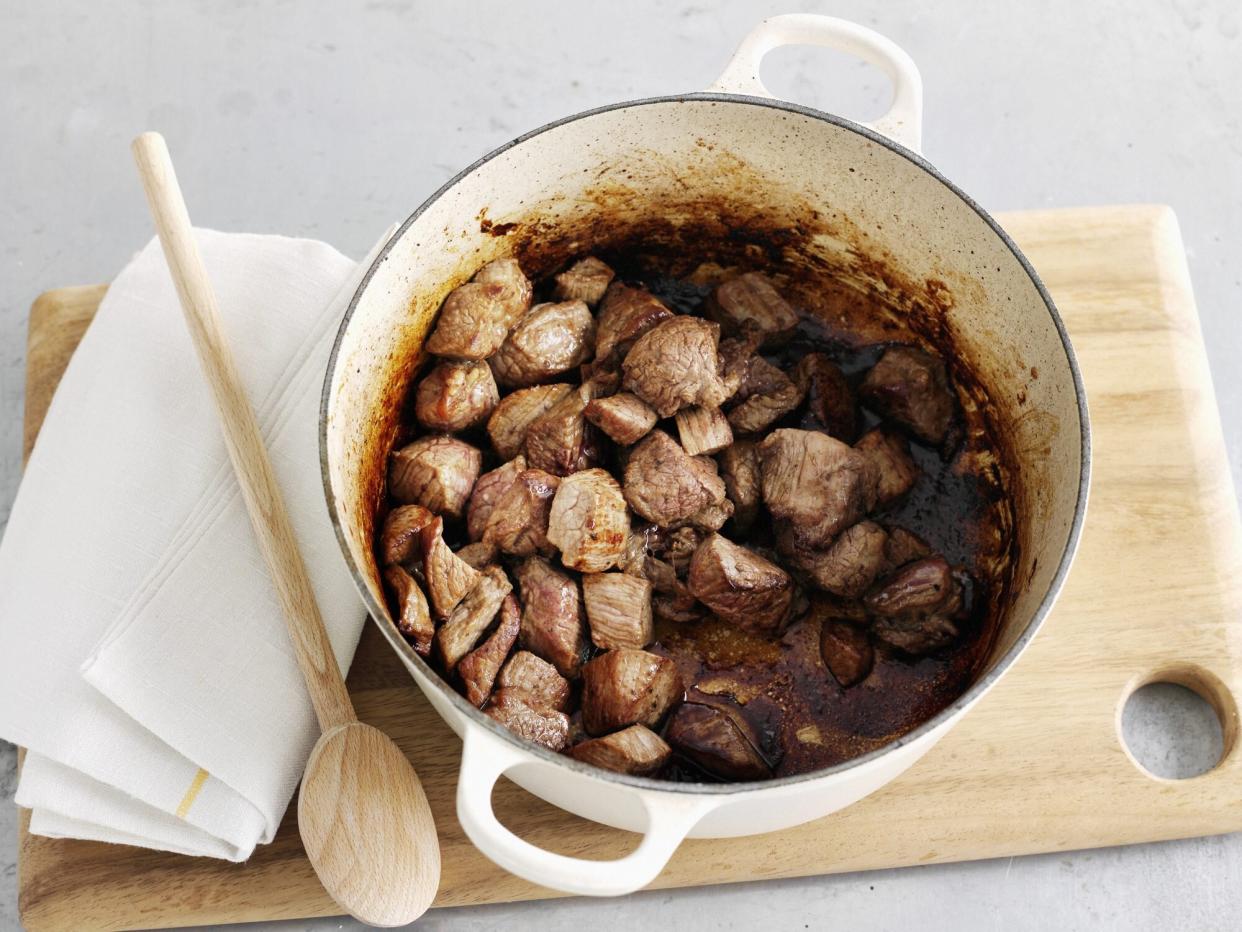How to Remove Those Stubborn, Baked-On Stains From Your Favorite Stoneware Cooking Pieces

Cultura RM Exclusive/BRETT STEVENS / Getty Images
TABLE OF CONTENTS
On This Page
Materials
Cleaning Tips
Treating Stubborn Stains
Restore Seasoning
Stoneware cooking and baking items come in all different forms—you might use a piece to prepare a lasagna for your family or to whip up a beloved baked dessert. Simply put, pieces made of this material can get a lot of love in your kitchen, which means your stoneware favorites might start showing some telltale signs of being well-used as time goes on.
Cleaning them properly and treating stains before they become particularly challenging is key, but unlike dishes made of more modern materials, stoneware can't stand up to most cleaning solutions and chemicals. Ahead, a quick guide to cleaning these key kitchen players—plus, exactly what you need to do to treat stains on stoneware as soon as you spot them.
Necessary Materials
The materials you'll need to clean your stoneware pieces depends on the type of cookware you have (unfinished or glazed) and the types of stains you're dealing with. Stubborn areas may require more heavy duty cleaning items—like elbow grease and vinegar—but if your piece is just speckled with seasoning spots, all you'll need is a little vegetable oil.
Nylon scrub brush
Baking soda
Soap
Elbow grease
Vinegar
Vegetable oil
How to Clean Stoneware
Your stoneware items—think Dutch ovens and casserole dishes—are likely the workhorses of your kitchen arsenal, which is why Christine Trefethen, the resident household specialist at Therapy Clean, says you need to treat them well.
Unfinished Stoneware
It doesn't take much to lift stains off unfinished stoneware—pieces that are rougher to the touch and made without a sealant. "Stoneware is best cleaned with a nylon scrub brush and a simple mixture of baking soda and warm water," Trefethen says. Apply the paste to your piece and scrub thoroughly with the brush, then rinse with warm water. "Soaps are not always recommended for these culinary sidekicks," she says.
Glazed Stoneware
Your glazed stoneware pieces—these are the items that have a shiny, hard finish applied over the natural stone—can withstand more aggressive cleaning. Unlike their unfinished counterparts, you can use soap on their surfaces. "The only time soap is recommended is if the stoneware is glazed," Trefethen affirms, adding that you should still skip the suds when you can.
Don't Use Citrus
Despite the cleaning powers of citrus, Trefethen notes that you should never use the acidic substance on stoneware. Double check your favorite cleaners and make sure there's no form of citrus included in the ingredient list, or else you run the risk of ruining a legacy piece while attempting to restore it to its former glory.
How to Remove Stubborn Stains
Seeing the occasional stain on stoneware isn't uncommon when you consider all of the foods and ingredients they're exposed to. However, some stains can be a bit harder to remove than others. "For really stubborn stains, use a teaspoon or so of vinegar and baking soda—scrub with elbow grease! Rinse with warm water and repeat as necessary," Trefethen says.
How to Restore Your Stoneware's Seasoning
Some of those stains and dark spots aren't stains at all—they might actually be a good thing. According to Trefethen, these spots are known as seasoning. "This means your cookware is in the seasoning process to last you a lifetime," she says. However, if you've stripped away some of your pan's seasoning while giving it a scrub, or you have a brand-new pan you want to give a solid base, follow Trefethen's tips.
"Always start by applying a thin layer of vegetable oil to your stoneware and putting it into a preheated oven of 400 degrees," she says. Then bake the piece for about 25 to 30 minutes for best results. Another great way to achieve a fine layer of seasoning on your pans is to put them to use immediately. "Baking biscuits, cookies, or even dinner rolls will help add to the natural non-stick baking surface we all long for," she says.

